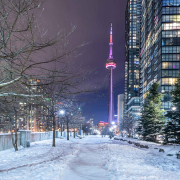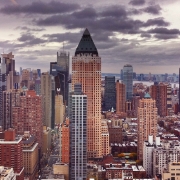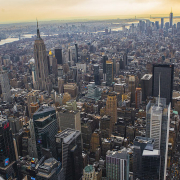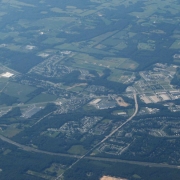Toronto Falls Into Pit of Urban Decline that’s Plagued U.S. Cities
For years, American urbanists and city planners have looked at Canadian cities with envy, as they had managed to avoid the searing decline of their American counterparts. And Toronto was where the late Jane Jacobs chose to make her home, largely due to her enthusiasm for urban neighbourhoods.
But more recently, the Greater Toronto Area has been showing signs of the urban ills that are commonly associated with city life south of the border. Carjackings, for example, have boomed; one recent victim was Maple Leafs star Mitch Marner.
Last year, CTV reported that downtown infrastructure has been deteriorating, as have cleanliness and order, which were once the city’s strong suits. Thomas Caldwell, chairman of Caldwell Investment Management Ltd. and former governor of the Toronto Stock Exchange, took out an ad in the Globe and Mail last fall describing Toronto as a “declining city.” Even with the pandemic gone, Toronto restaurants have reported declining customers for in-person dining.
Toronto’s downtown malaise, which is mirrored in other Canadian cities, reflects in part the accelerating decline of what Jean Gottman once called the “transactional city” — a place defined largely by high rise offices. In the United States, office occupancy has been declining since the turn of the century.
This crisis has been made worse by planning policies, which are common throughout Canada’s largest cities, that limit suburban growth, the normal way cities have long expanded. Seeking to squelch the development of new single family homes, planners have targeted the aspirations of Canada’s young families. This has had two unintended effects: making housing in and near the city more expensive; and, ironically, chasing people even further away to the far fringes of the region and beyond.
According to Demographia’s 2023 survey of 94 major housing markets around the world, Toronto was the 10th least affordable. The region’s price-to-income ratio (“median multiple”) has increased from 5.2 in 2010, to 9.5 today, making Toronto more expensive than virtually any American city outside California and Hawaii.
For its part, Vancouver had the third-worst median multiple according to Demographia’s survey, trailing only Hong Kong and Sydney. Vancouver’s price-to-income ratio has increased from 5.3 in 2005 to 12 in 2023. Imagine this: Vancouver is pricier than London, New York, San Francisco, Los Angeles and Chicago.
Read the rest of this piece at National Post.
Joel Kotkin is the author of The Coming of Neo-Feudalism: A Warning to the Global Middle Class. He is the Roger Hobbs Presidential Fellow in Urban Futures at Chapman University and and directs the Center for Demographics and Policy there. Learn more at joelkotkin.com and follow him on Twitter @joelkotkin.
Photo: Toronto Views, via Flickr, under CC 2.0 License.


 Mike Dunn, CC 2.0 License
Mike Dunn, CC 2.0 License


 Sean Pollock, via Unsplash
Sean Pollock, via Unsplash

